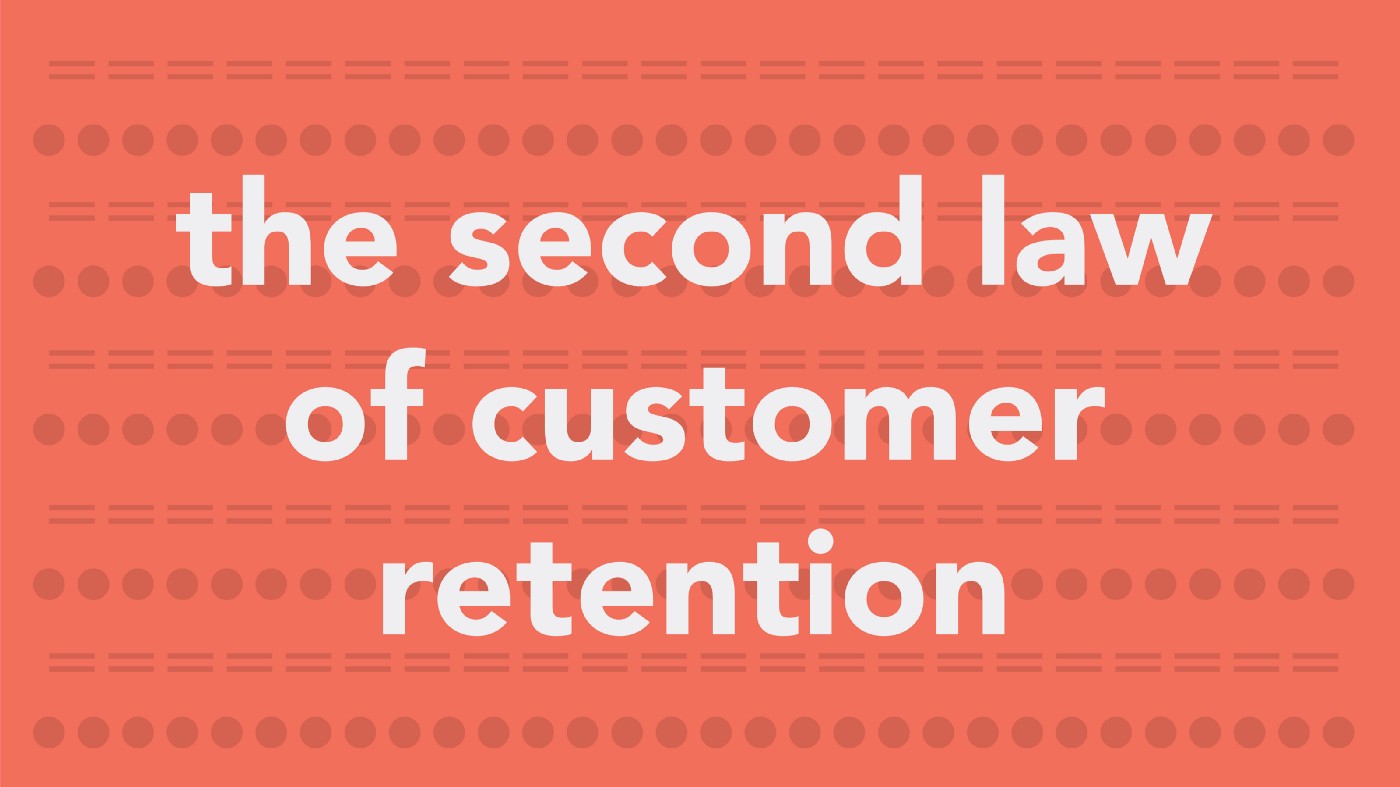Retention is not a Single Moment in Time, but Rather a Series of States Determined by Actions in the Customer Retention Lifecycle
In The First Law of Customer Retention (previously published here), we talked about how retention is a cornerstone to sustainable growth and a key driver of new organic customer growth within a business. We defined it as the volume of customers as a percentage of the total base who come back to an experience over time and continue to exert the effort and/or pay the cost to reach the value available in said experience.
Further, we provided an equation to determine whether or not a potential customer moving through a business’s customer experience will be retained based upon the ratio of value to cost and effort. This equation and the retention k-factor that it produces is powerful if used correctly, but is only a piece of a much larger retention puzzle.
This larger puzzle shows us that customer retention is not a single moment in time. Rather, it’s a series of states that are constantly changing based upon the actions people are taking in response to content and features they experience from a business.
These states are determined and governed by key action gateways that potential customers must go through to become a loyal customer who comes back time and time again.
The Customer Retention Lifecycle
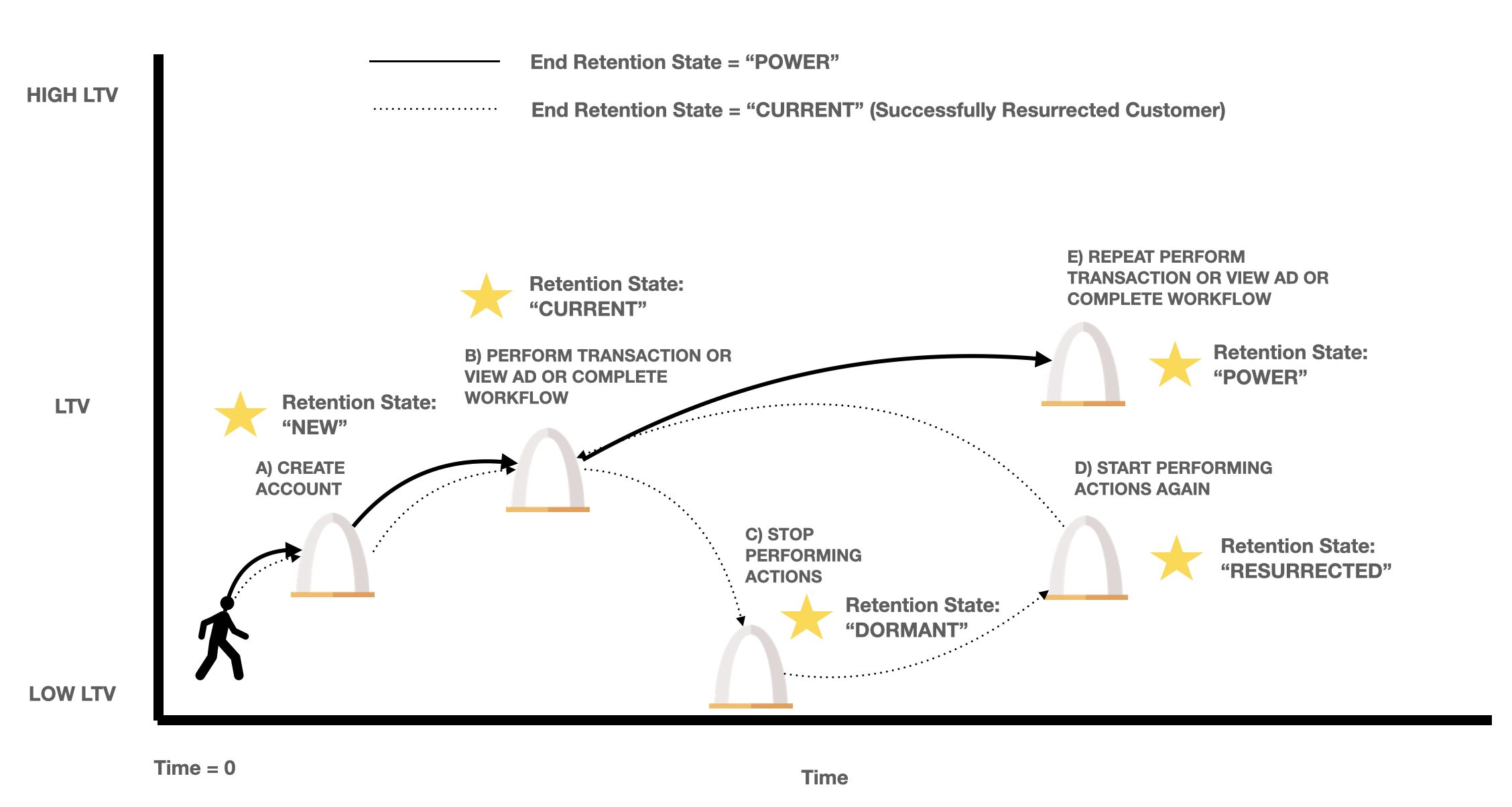
All potential customers will enter the customer retention lifecycle by becoming “aware” of a business through some piece of advertising or marketing content, or by word-of-mouth.
The first retention gateway that a potential customer goes through is the “identity” gateway, and potential customers make it through this gateway by creating an account or some other action where they give a business a way to identify who they are through an email or phone number for example.
It should be noted that businesses that do not require an account to be created or do not collect any personally identifiable information (aka — P.I.I.) are not able to effectively measure retention and thus this framework would not be 100% applicable. Further, many businesses, such as an e-commerce website for example, offer people the ability to checkout as a guest. While you don’t explicitly create an account, these brands often collect a personal identifier during the checkout process and append it to the purchase record and thus are able to measure retention states. You simply cannot measure customer retention without knowing who a person is in the context of your business.
After a potential customer establishes their identity with a business, they have two choices:
- Continue performing actions with the business
- Stop performing actions with the business
Below is a flow diagram showing the possible paths potential customers can take based upon these two different choices:
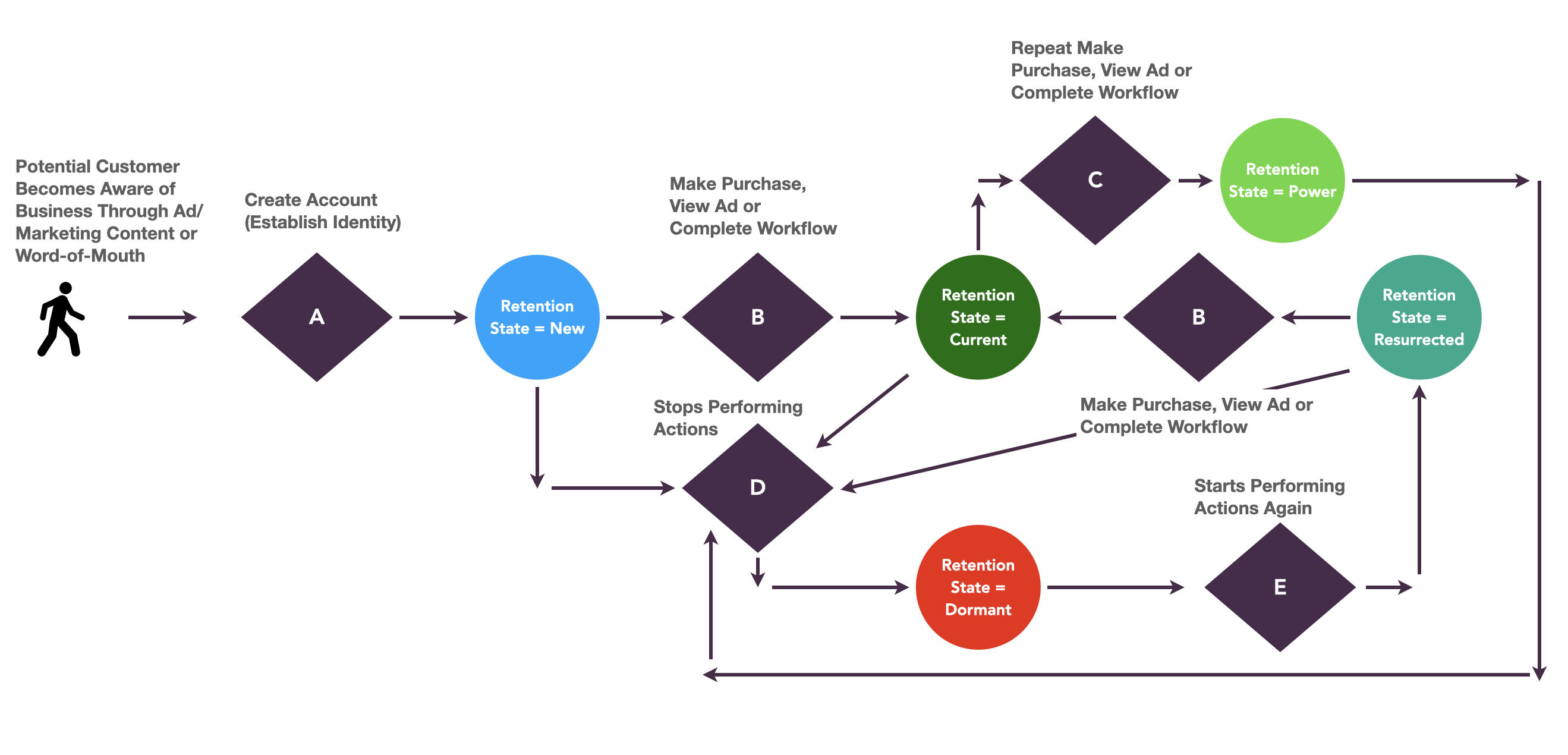
Measuring Your Retention Pulse
In order to measure this lifecycle in your business and make it actionable, we need to view this retention lifecycle window over time and then draw conclusions from the trends. An example of how this can be visualized is shown below.
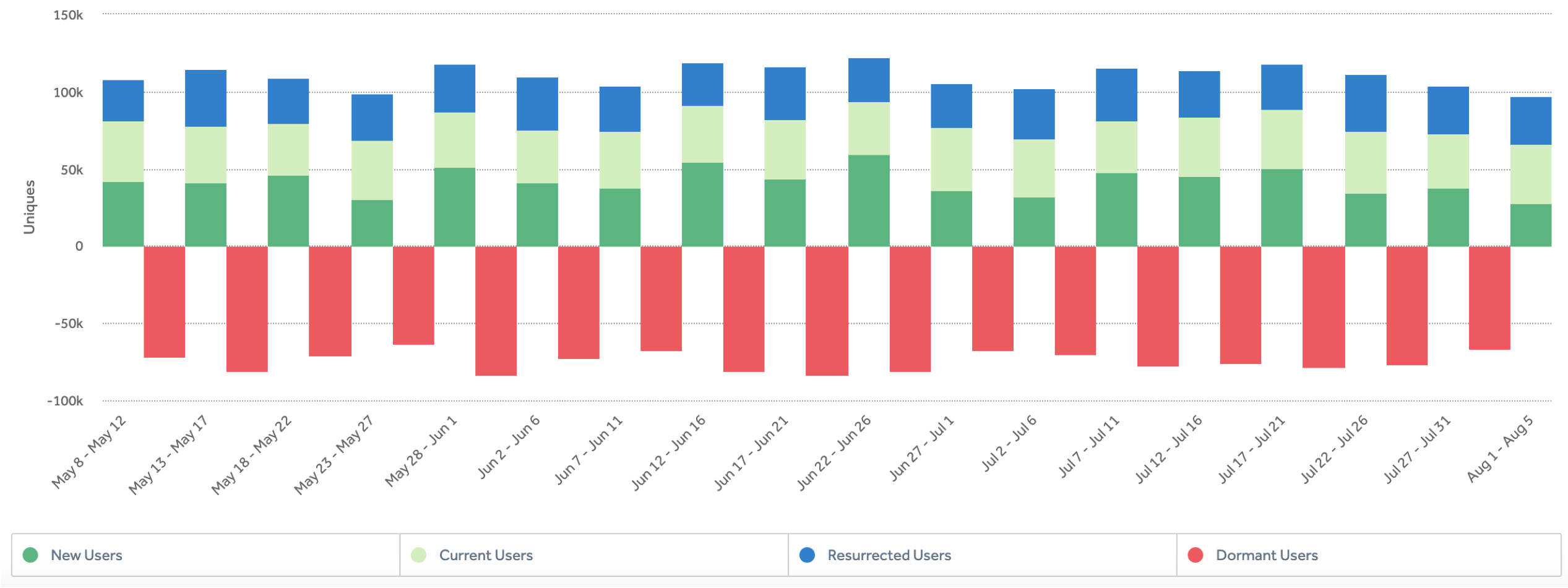
From this visualization, we are able to see the flow of people between different retention states within a business’s customer experience. We can use this to measure the retention pulse of an experience which tells us the trajectory of retention at any given point in time (Source — William Zhang, Amplitude).

If the Customer Retention Pulse (CRP) is less than one, that means the business is losing retained customers faster than adding new or resurrected ones and thus are in a state of retention decline for that given time period. Conversely, if this CRP is greater than one, that means the business is adding more retained customers than it is losing and thus are in a state of retention growth for that given time period.
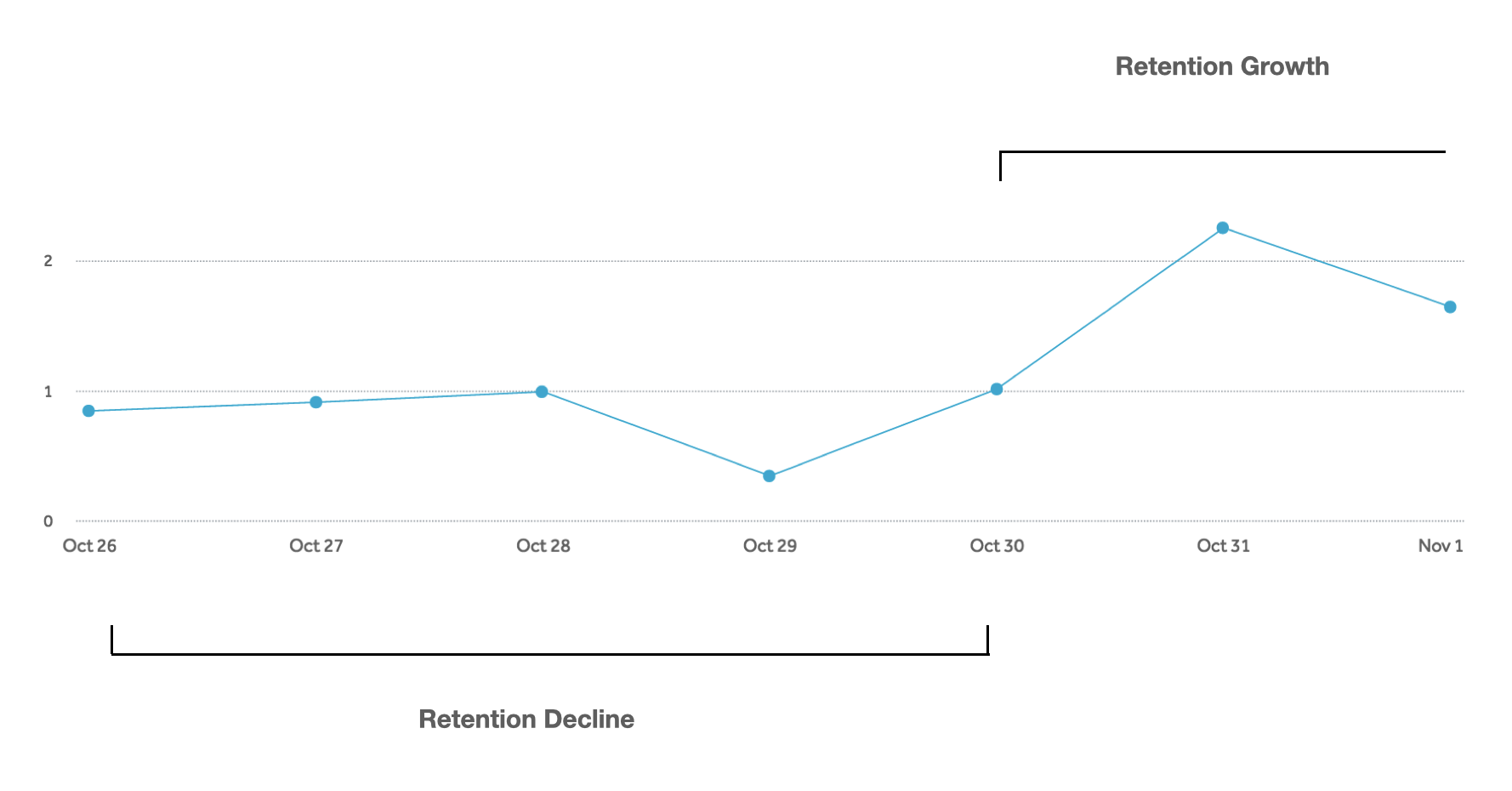
Shifting from Decline to Growth
If a business wants to shift from a state of decline to a state of growth, they need to add more value and/or decrease the effort and/or cost associated with reaching that value, as detailed in The First Law of Customer Retention here.
Insuring that potential and existing customers are always seeing more value than the effort and cost associated with acquiring that value, will give a business the best chance of keeping their CRP above one. Businesses that always maintain a CRP above one will always have a greater in-flow of new and resurrected customers than the out-flow of dormant users, insuring sustainable retention growth.
In summary, retention is not a single moment in time, but rather a series of states that are constantly changing based upon the actions people are taking in response to content and features they experience throughout their time with a business. These states are determined and governed by key action gateways and measured over time can be used to calculate the customer retention pulse of business to highlight if it is in a state of retention decline or growth for a given time period.
